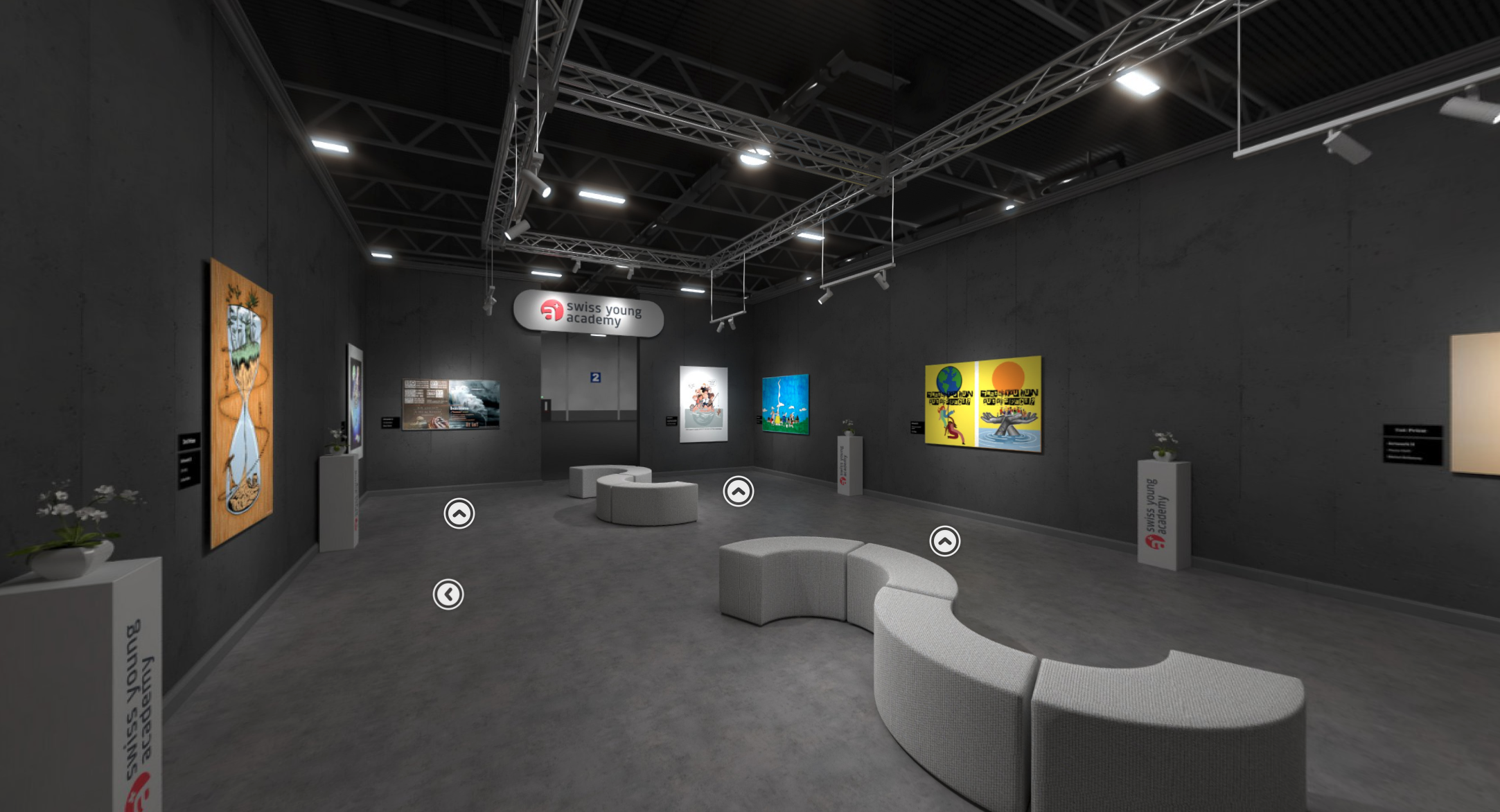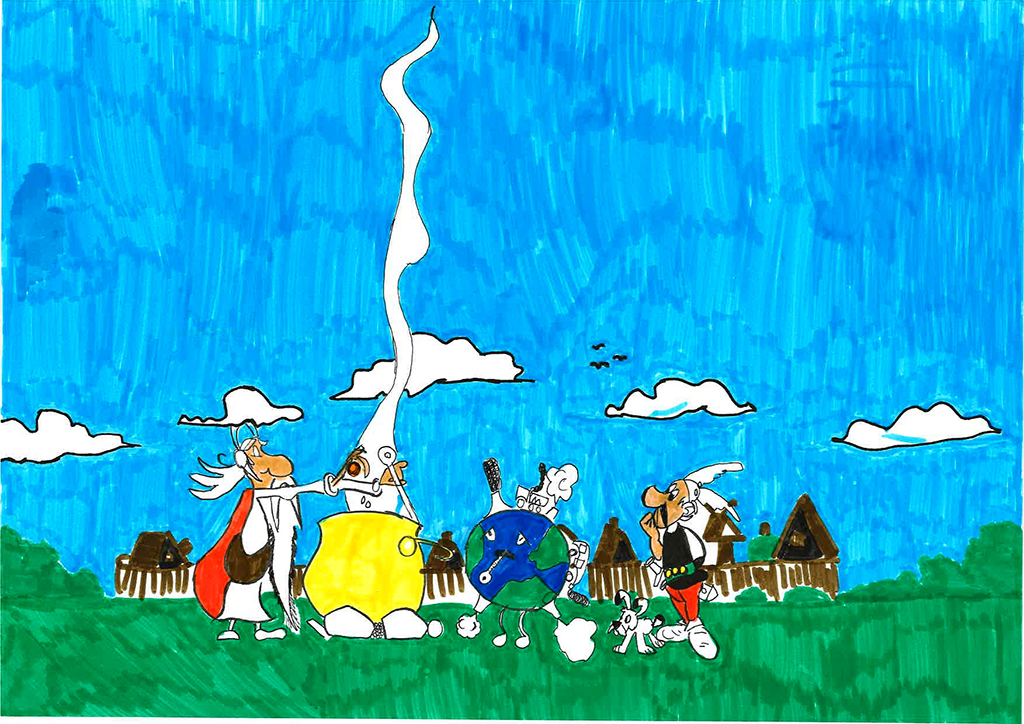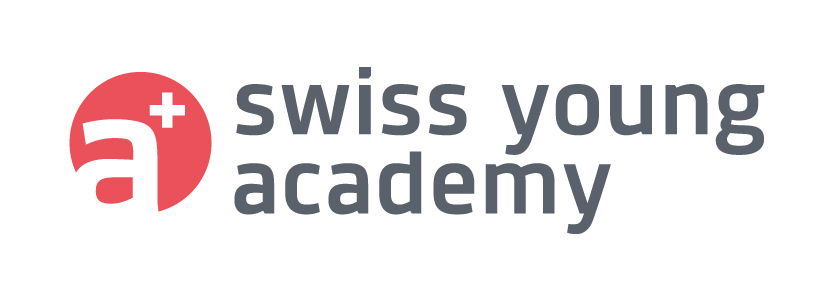Networking science.
Design Challenge - Sight Unseen: Depicting Climate Change in the Light of Human Rights

How and to what extent does climate change affect human rights? This question was explored in the scope of the design challenge themed “Sight Unseen: Depicting Climate Change in the Light of Human Rights”. The design challenge was launched by the project group Human Rights of the Swiss Young Academy as a buildup to and as part of the event The Future of Human Rights: Discussions - Performances - Debates on the Human Rights Day on 10 December 2021. The goal of the design challenge was to portray climate change in the perspective of human rights, in order to seek new approaches to science and policy communication. The design challenge's task was to illustrate one or more themes related to human rights and climate change from a specified set of topics.
From a colourful and diverse set of submissions of artworks, the ten winners were selected based on the three evaluation criteria: originality, informative value, and complexity. The artworks were evaluated by an interdisciplinary jury composed of five experts coming from the fields of art, education, law, climate change, research and journalism. The jury discussed the submitted artworks by children and adults from different professions. The interdisciplinary nature of the jury brought up lively discussions among them. In the end, Marlon Bellanova's artwork was unanimously chosen as the winning artwork.

Marlon Bellanova’s artwork and the other nine winners were meant to be awarded and exhibited at the event on 10 December 2021 in Bern among performances, debates and discussions in the context of human rights linked to art, healthcare and digitization. The project team has been organizing and preparing for the event months in advance and was looking forward to a lively event bringing together researchers, artists, activists, students, and young professionals from all backgrounds related to the event’s topics. Due to the ongoing pandemic, however, the project team had to switch last minute to an online format. This meant for the design challenge, that the artworks could no longer be presented physically in the exhibition as part of the event. Nevertheless, the project group managed to set up a virtual exhibition, where visitors can “walk around” in an elegant virtual room with all ten artworks placed on the walls of the room. In addition, the artworks will be exhibited physically and permanently at the premises of the event location Synergy Village in Feldbach ZH.
1st Prize
Please Refill
Marlon Bellanova

Marlon Bellanova, Product & Industry Designer pointed in his artwork that “climate change is not just about CO2 emissions. The consequences of climate change are particularly evident in developing countries in form of lack of food security, a shortage of clean water and diminishing fertile soil. The economic performance of the poorest countries, which are largely dependent on natural resources and agriculture, will be immensely affected, drastically increasing poverty in these regions”.
The aim of his work is “to show these precarious circumstances in form of empty and devastated containers and inspire the viewer to fill the emptiness again. In what form this takes place is up to each individual. However, one thing is clear: we must act now and not wait".
The jury awarded Marlon Bellanova’s artwork with the first prize due to “its simple yet provocative nature”. The jury explains further that the artwork “makes the viewer wonder and leaves some ambiguity in the message with references to scarcity and science. Yet it conveys impressively how little fertile land mankind has left and how precarious the food and water situation is".
2nd Prize
(No title)
Melissa von Büren

Melissa von Büren, a school teacher with a subject responsibility in visual design, shows in her submission “opposites such as fullness and emptiness, abundance - lack, flourishing - spoiling, right - wrong, living and dying. Divided into three columns with the themes of water, earth and food, these opposites are depicted". Furthermore, she explains what can be seen in her artwork: “Climate change carries challenges to humanity. The corals are bleaching, the schools of fish are disappearing and with them the small fishermen. Instead, the boats are full to the brim and groaning under the weight of the fates. The soil dries out and becomes infertile. Cracks mark the earth and cracks mark the families. Stomachs burn with hunger and the forest burns as well. Climate change is happening and human rights are being violated as a result. It's time for a change, it's time for change for good."
The jury awarded her artwork with the second prize and states that “this complex graphic impresses with its very detailed narrative spanning effects and responses to climate change from all around the world. The chosen colors make clear that these are profound and negative changes – and touch the viewer also emotionally".
3rd Prize
(No title)
Lioba Keller

Lioba Keller, a bookbinder and student in illustration, who likes to deal with environmental topics, addresses in her artwork the topic on measures to combat climate change. She explains that in her artwork “the focus is on the temporal limitation of these measures taken (and taken too late). The reforestation and the dwindling share of rainforests trickles through a narrow space into the momentous consequences for people and the environment. In the process, the routes for indigenous peoples to obtain drinking water and timber are becoming longer and more perilous. The "inconspicuousness" of these peoples is something I also wanted to pick up on in my painting."
The jury saw in her artwork that “the hourglass very clearly shows how time works against us if we deplete resources as we have been doing so far. It convinces with its calm yet evocative manner“, therefore the jury awarded her work with the third prize.
In the name of the project team and the jury, we would like to thank all participants of the design challenge for their valuable contributions. All other winning artworks can be viewed below or in a virtual exhibition.
Devi Bühler, 13 February 2022
4th-10th Prize
Mazzarón - Welche Zukunft hat die Jugend?
Beat Schertenleib

"Das Foto entstand in Mazzarón, Spanien. Als ich das liegengelassene Dreirad sah, lief vor meinem inneren Auge die Geschichte des spielenden Kindes ab. Die Freude, es zum ersten Mal ausfahren zu dürfen, die Farbe noch glänzend. Es kurvte durch Sand und Steine, womöglich auch über Gras. Das gelbe Vehikel strahlt auch etwas Deprimierendes aus. Der Sattel mit seiner abgeschossenen Farbe abgedreht, der Lenker abgebrochen. Verlassen, nur noch ein Stück Müll. Keine Zukunft. Die Verbindung zum Wettbewerb war dieses Wort, Zukunft. Wenn ich an junge Menschen denke, dann wünsche ich ihnen Perspektiven. Sie sollen nicht in einer Müllhalde aufwachsen, in eine trostlose Gegend schauen. Das ist ihr Recht und jeder Mensch steht in der Verantwortung, seinen Teil dazu beizutragen. Ich habe es durch meine Aufnahme versucht, bildlich einen Beitrag zu leisten."
About
Beat Schertenleib arbeitet als Fotograf mit den Spezialgebieten Reise-, Architektur - und Portraitfotografie. Er reist so oft als möglich mit dem Fahrrad: Aus ökologischen Gründen und wegen der Einfachheit für das Fotografieren. Viele Male entdeckt er ein Fotomotiv am Strassenrand. Wenige Meter entfernt liegt es zur Aufnahme bereit.
4th-10th Prize
Climate Change & Human Rights: Checkmate?
Natacha Vouilloz

"Le changement climatique affecte de nombreux êtres humains qui doivent à contre-coeur quitter leurs lieux de vie. L'exil qui les attend ressemble souvent à un jeu d'échecs. Faire respecter les droits de chaque être humain ainsi qu'assister les plus vulnérables est une lutte de tous les instants."
Crayons de couleur, pastels et fusain sur papier.
About
Sensible aux droits humains et à la cause environnementale, Natacha Vouilloz s'efforce de les honorer, à son humble niveau, dans sa vie quotidienne. Aujourd'hui par le biais de ce dessin.
4th-10th Prize
How climate change affects the right of free expression
tobit (Tobias Tschopp)

"Die drastischen Folgen des Klimawandels betreffen Menschenrechte ganz grundsätzlich. Während die Hauptverursacher des Klimawandels Debatten um persönliche Freiheiten führen, sind andere Menschen davon existenziell betroffen. Leider trifft es dabei nur allzu oft genau diejenigen, deren Menschenrechte bereits heute beschnitten werden – allen voran die Menschen aus den ärmeren Ländern unserer Südhalbkugel. Die Zeichnung greift diese Ungleichheit auf und gibt sie überspitzt wider: Die Südhalbkugel ist bereits im immer weiter steigenden Wasser versunken. Eine einzelne Hand (gezeichnet in Anlehnung an das universelle Logo der Menschenrechte) reckt sich in letzter Hoffnung auf Rettung aus dem Wasser. Auch auf der Nordhalbkugel müssen die Menschen langsam zusammenrücken, um im Trockenen zu bleiben. Doch sogar in dieser misslichen Lage, gibt es Menschen, die sich selbst nicht in der Verantwortung sehen. Wird ihrer Ansicht vehement widersprochen, empfinden sie dies als Verletzung ihrer individuellen Freiheit."
About
tobit heisst eigentlich Tobias Tschopp und ist in Sarnen aufgewachsen. Er hat in Zürich Umweltnaturwissenschaften studiert und lebt und arbeitet noch heute in der Limmatstadt. Nebenbei studiert er Illustrationsdesign und zeichnet regelmässig Illustrationen und Cartoons für Freunde, Bekannte und andere Begeisterte.
4th-10th Prize
Astérix et la terre en danger
Rafaël Monin

"Depuis la crise du menhir (Obélix et Compagnie®), l’économie domine et écrase le monde, la course à la performance n’a fait que s’empirer. La planète est en danger. Elle a un gros rhume de pollution, les droits humains sont menacés. Toutes les tentatives pour sauver la terre ont échoué… Les Gaulois ont été appelés. Plus qu’un seul espoir : la potion magique de Panoramix !"
About
Rafaël Monin a 9 ans. Il fait beaucoup de sport, du dessin et est élève en 5e Harmos. Il aime lire des livres sur la terre et l'astronomie et plus tard, il sera constructeur de moyens de transports non polluants.
4th-10th Prize
What if you run out of space?
Julia Nigg

"Ich wählte dieses Thema da es gerade sehr aktuell ist und wir durch den Klimawandel eine unsichere Zukunft haben. Noch nie hat sich eine Generation so viele Sorgen um die Zukunft und unseren Planeten gemacht. So geht es auch mir. Wie lange werden wir noch genug Platz für alle Menschen haben? Da wir in der Schweiz von all diesen Probleme nicht direkt betroffen sind ist es einfach die Augen vor der Realität zu verschliessen, doch ich möchte mit meiner Arbeit zeigen dass, obwohl wir nicht direkt betroffen sind, auch etwas an unserer Lebensweise verändern müssen um Solidarität zu zeigen. Wir sitzen alle im gleichen Boot und müssen alle am gleichen Strang ziehen um etwas zu verändern, darum habe ich die Assoziation von den Händen & dem Wasser und dem Strick an der Erde."
Zur Künstlerischen Umsetzung wurden Fotografie und Grafik vereint um ein Mix zu gestalten.
About
Julia Nigg ist 24 Jahre alt und kommt aus Chur. Sie arbeitet Teilzeit als Polydesignerin 3D, neben dem Arbeiten studiert sie im ersten Semester als Dipl. Gestalterin HF Visuelle Gestaltung an der Schule für Gestaltung in St. Gallen. Ihr Beweggrund für diesen Wettbewerb ist, dass sie dieses Thema extrem wichtig findet und so eine Möglichkeit erhalten hat um etwas für ein umfassendes Thema zu gestalten.
4th-10th Prize
Earth, 2121
Philip Gosset

"To illustrate the main link I see between human rights and climate change, I decided to paint what the earth might look like in 100 years. The main factor is that our economy depends on endless growth and overconsumption. Multinational corporations keep their workers in dysmal working conditions, so that the western world can be supplied with ever more cheap commodities that people need to be manipulated into buying through endless and omnipresent advertising. Whenever people's ability to endlessly consume gets restricted at all, markets threaten to collapse and the wage gap grows larger. Those in power need to fight against climate action and combat human rights in the name of infinite growth. If we do not replace the market's unconditional addiction to increasing profit with a more humane system, the merciless exploitation of the working class and our planet's resources will continue, until something else becomes more profitable."
Painted using « Procreate ».
4th-10th Prize
Our Business
Dario Obrist

"In times where we focus so much on economic growth, we tend to link the term "Business" to successful corporations and profit. This work should show that we have more urgent business to take care of, because climate change and human rights is everyone's business."

Virtual Exhibition
All award-winning works can be viewed in a virtual exhibition.
